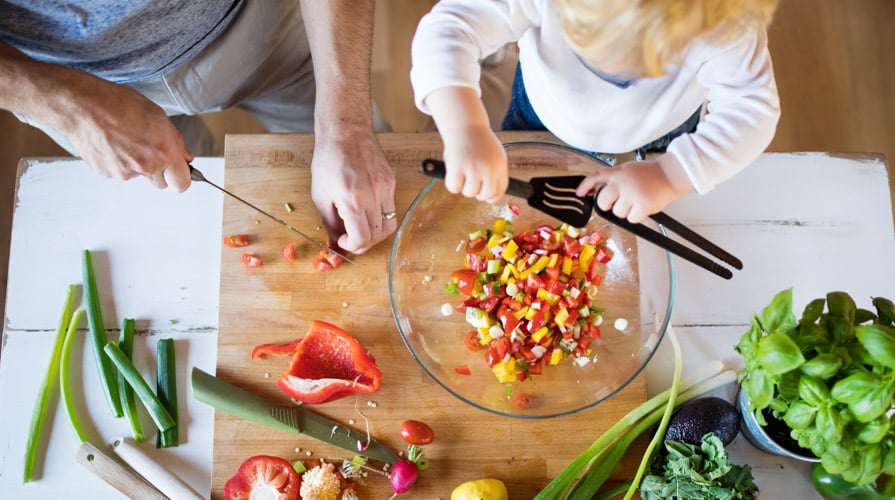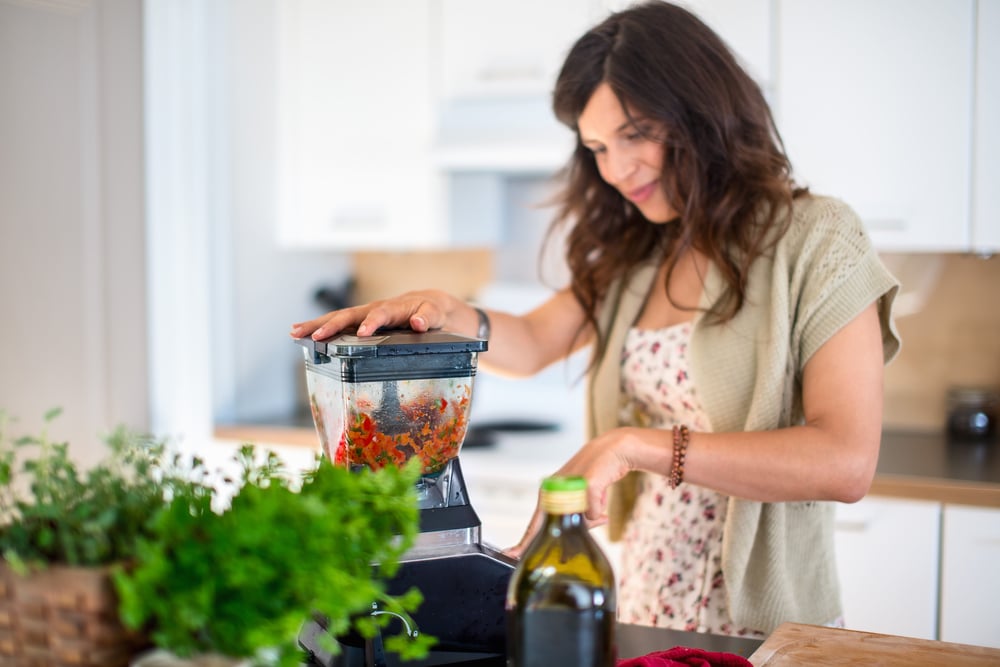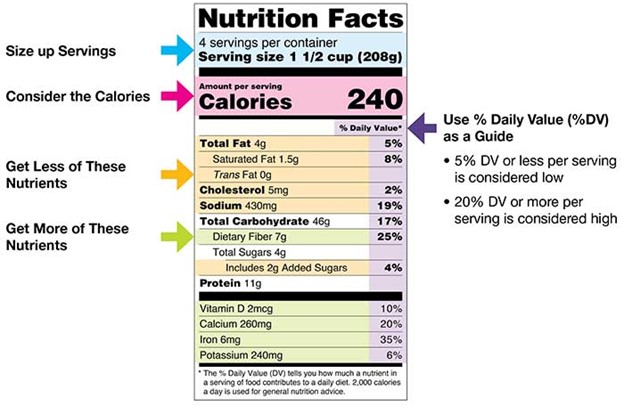Our Team Listens
Your symptoms are unique to you. Your nutritionist tracks your food with you and makes specific recommendations to help you and your developing baby.
Whether you learn best with one-on-one support or in a small group setting, we have the perfect program for you.
We also offer a wide array of self-guided materials, empowering you with valuable resources to further support your transformation.
How Nutrition Coaching Works
Our programs are meticulously designed to help you achieve your health goals while enhancing your overall well-being.
We provide personalized counseling and unwavering guidance, ensuring that every step of your journey is met with success.
Take Our QuizOnPoint's team of highly skilled online dietitians and nutritionists are dedicated to empowering you with the knowledge and tools to cultivate sustainable habits that lead to long-lasting success on your health and wellness journey.
We understand that getting started is the hardest part — especially having used programs in the past that are confusing and rigid. Use our materials to learn how to lose weight in a healthy, gradual, and sustainable way.

We’re not interested in a quick fix that’s going to leave you high and dry after acting on a bunch of false promises.
We’re here to help you take that small step forward and take advantage of the resulting momentum. This guide contains the best of the best of our program methods that have helped thousands of people make sustainable change to their lifestyles.
We can’t wait to see the healthier, more confident you!
Goodbye Calorie Counting - a renewed approach to your food & nutrition.
We believe that everyone wants to eat the right foods and take care of their body. It’s a fact. Our approach divides the food universe into five categories to guide your nutrition planning efforts. Good-bye calorie counting, hello food freedom!
The total amount of energy a person needs each day varies depending on a number of factors, including the person’s age, sex, height, weight, and level of physical activity. Within each age and sex category, the low end of the range is for sedentary individuals; the high end of the range is for active individuals. The ranges listed below are only estimates.
4-8 daily servings
High quality starches are a healthy, integral part of your diet. Starch fuels our brain and body to accomplish daily activities. It’s important to remember that quality is just as important as quantity.
2-3 daily servings
Protein molecules make up enzymes that facilitate important chemical processes within the body. Your body uses protein to build and repair tissues such as our muscles, bones, skin and hair.
A simple way to estimate your daily protein needs is to multiple your body weight in pounds by .36 grams. For example, .36 grams x 150 lbs. of body weight = 54 grams of protein per day.
For our vegetarian & vegan friends –
Although a plant-based diet can meet 100% of your nutritional needs, you should be aware of a few common nutrient deficiencies. The most common deficiencies include vitamin B-12, vitamin D and calcium. Eating a diet rich in these nutrients (Leafy greens, sardines, soybeans and fortified cereals and grains contain high levels of calcium), or supplementing with vitamins and minerals, will help prevent these deficiencies.
5-6 daily servings
Fruits and vegetables are a vital part of a healthy and complete diet, packed with antioxidants, phytochemicals and fiber. Composed of mostly water, fruits and veggies also help to meet your daily hydration needs. Each fruit and vegetable color group has a unique set of nutritional qualities. It is key to eat the rainbow to optimize your health.
6-8 daily servings
Fats are one of the three major macronutrients, along with carbohydrates and protein. Of the three, fat is the most calorically dense. Fats play a key role in brain development, prevent against injury and provide the energy our bodies need.
1-3 daily servings
Foods in the dairy group provide nutrients that are vital for health and maintenance of your body. Nutrients such as calcium, potassium, Vitamin D and protein promote improved bone health.
When purchasing plant-based dairy products, choose products that contain at least 5g of protein, less than 5g of fat and no more than 15g carbohydrates per serving.

| Food Group | Examples |
|---|---|
|
Protein |
Chicken, turkey, fish, beef, tofu, tempeh, seitan, plain Greek yogurt, cottage cheese, ricotta cheese, eggs, protein powder, beans, lentils, legumes |
|
Starch |
Beans, lentils, legumes, starchy vegetables (corn, peas potatoes), squash, grains, pasta, rice, bread products |
|
Fruit |
Apple, Banana, Kiwi, Peach, Mango, Cantaloupe, Honeydew, Melon, Watermelon, Cherries, Grapes, Pineapple, Apricot, Plum, Orange, Nectarine, Blackberries, Blueberries, Raspberries, Strawberries, Grapefruit, Tangerine, Clementine |
|
Vegetable |
Leafy greens, green beans, broccoli, cabbage, brussels sprouts, zucchini, cucumbers, celery, asparagus, cauliflower, beets, carrots, tomato, peppers, eggplant, mushrooms |
|
Fat |
Avocado, olives, olive oil, avocado oil, nuts, seeds, butter |
|
Dairy |
Milk, yogurt, cheese |
Between the aisles of snack foods, crowds of people, and the ever-expanding specialty foods section, the grocery store can be an intimidating place-especially when trying to create and maintain a healthy lifestyle.
From produce to bakery, and fresh to frozen, identifying your steady go-to’s is pertinent when aiming to make better food choices. The next time you visit your local grocery store, we suggest focusing on the following 3 tips.
| Food Group | Typical Store Location | Best Choices |
|---|---|---|
|
Fruits |
Produce Aisle Canned Goods Freezer Aisle Salad Bar |
Fresh, Frozen, Canned and Dried Fruits |
| Vegetables | Produce Aisle Canned Goods Freezer Aisle Salad Bar Pasta Rice & Bean Aisle |
Fresh, Frozen and Canned (especially dark green and orange). Dry Beans and Peas. |
| Grains | Bakery Bread Aisle Pasta & Rice Aisle(s) Cereal Aisle |
Whole Grains for at least half of choices. |
| Milk, Yogurt, & Cheese (calcium-rich foods) |
Dairy Case Refrigerated Aisle |
Non-Fat and Low-Fat Milk, Yogurt and Cheeses |
| Meat and Beans Fish, Poultry, Eggs, Soy & Nuts (protein foods) |
Deli Meat & Poultry Case Seafood Counter Egg Case Canned Goods Salad Bar |
Lean Meats, Skinless Poultry, Fish, Legumes (dried beans and peas), and Nuts. |
Food Label Example

Cereals
Nut & Seed Butters (avoid added sugars + oils)
Protein / Snack Bars
Salty Snacks
Sweet
Dry Goods
Protein:
Fruits and Vegetables:
Starch:
Dairy:
Fat and Condiments:
Grocery costs shouldn't prevent you from shopping healthy for your family. Stores such as Aldi and Lidl make it possible to build a healthy shopping list for your whole family. Walmart has also vastly improved its grocery section in a budget-friendly manner.
Many generic grocery stores have increased the number of specialty items they carry, including cage free eggs, non-dairy milks, various gluten-free products, and an increase in local and organic produce. The trick to saving money is knowing what your options are. Read a few examples below for savings we recently found at Walmart:
Read exactly how to save money at Walmart in the full write-up.
Establishing new habits may take extra planning if you are also responsible for the shopping and cooking for your spouse and kids. If you handle the grocery shopping and meal planning for the entire family, follow these tips:
We know what you’re thinking, “I don’t have enough time to plan and cook my meals for the week”. Meal prep can take anywhere from 1-4 hours, depending how many meals you plan for. Remember, YOU DON’T NEED TO MAKE 7 DAYS OF MEALS AT ONE TIME! Meal prep is simply what you do to prepare for the next day – don’t over think it.
Meal prepping should be fun and save you time throughout the week. For more tips on meal prepping, check out a few new ideas from our friends at Porch.
Whether you choose to bake, roast, sauté or steam your food – we’ve got you covered. Batch cooking is our favorite meal prep method. When planning your week, choose 1-2 protein options, 1-2 starchy foods, 3 types of fruit, a variety of vegetables (fresh and frozen) and quick, heart healthy fat.
Roasting in the oven is our go-to recommendation when it comes to making food in bulk. Most protein and vegetables can be roasted together or separately at 350 degrees Fahrenheit. Cook for 30 minutes, then check every 10 minutes until cooked through. Chicken should be cooked to 165 degrees but vegetables can be cooked to your liking. See below for a full list of easily baked and roasted foods. Top these foods with our favorite seasoning blends and sauces to create a delicious meal.
Seasoning Blends
Flavorful Sauces
Lean how to Roast + Bake with this video from wikiHow: https://youtu.be/bkaaqwmi6XQb0
Sautéed foods are cooked in a thin layer of fat over medium-high heat, usually in a frying pan. Be sure to choose an oil with a high smoke point such as avocado oil to avoid potential free radicals. Mushrooms, onions and peppers all taste great sautéed!
Learn How to Sauté with this video from wikiHow: https://youtu.be/xb2nrlWGzaM
Steaming veggies is a great option to maximize the food's nutrient value. The steam cooks vegetables without touching the water. This ensures the nutrients won't leak into the water.
Learn now to Steam with this video from wikiHow - https://youtu.be/R-QBlNYpl6c
Last, but certainly not lest – our favorite kitchen gadgets. Stocking your kitchen with these helpful tools will make your cooking a breeze.
| Kitchen Tool | Purpose |
|---|---|
| DIGITAL FOOD SCALE | The most important tool in your kitchen! A reliable food scale helps you to control portions and serving sizes. |
| WET AND DRY MEASURING CUPS | These little cups and spoons are just as important as your new food scale. Portioning is key! |
| NON-SLIP MIXING BOWLS | From salads and gazpacho to DIY protein bars and energy bites, there's no limit to the dishes you can whip up in these bowls. |
| KNIFE SET | Using dull knives is frustrating and dangerous. If you don't want to splurge on a full set, we recommend picking up a chef and paring knife. |
| SLOW COOKER | This gadget can cook an entire meal with minimal effort. If you're busy, this tool is a life saver! |
| BLENDER/FOOD PROCESSOR | Easy way to mix wet or dry ingredients. This tool is also great for chopping veggies + fruits. |
| VEGETABLE AND FRUIT PEELER | This little tool makes peeling carrots, potatoes, or even apples much easier. |
| CUTTING BOARDS | Use separate, color-coded plastic cutting boards for different ingredients to prevent cross-contamination. Wooden cutting boards are porous, increasing the change of spread harmful bacteria. |
| SHEET TRAYS | Easy way to cook an entire meal at one time. Combine your protein, starch and vegetables on one sheet pan to create the perfect meal. |
| THERMOMETER | Nothing ruins a dinner party like under cooked meat. A digital thermometer is always best. |
| CAST IRON SKILLET | A cast iron skillet can move from stove top to oven seamlessly. This reduces clean up time. |
| GLASS STORAGE CONTAINERS | Glass bowls are easier to clean than plastic and can be safely microwaved. |
The Keto Diet remains one of the most common fad diets in popular culture and in online marketing. You may also know it as the ketogenic diet, low carb diet or low carb high fat (LCHF)… pretty much, the diet that primarily focuses on eating exclusively high-fat foods. The Keto diet emphasizes a diet high in fat, moderate in protein and very low in carbohydrates. Its goal is to train your body to burn ketone fats as a primary energy source instead of glucose, which we get from carbohydrates. Ketosis is the state in which you’re striving for – a natural process initiated by the body when food intake is inadequate. The reality is that it is very difficult for your body to reach ketosis.
The Keto diet is problematic for many reasons:
We and our friends at Today’s Dietitian like to remind people that a Ketogenic Diet is only medically used to treat refractory seizures, typically for children.
The premise of the Paleo Diet is if cavemen didn’t eat it, then neither should you. Advocates of the Paleo lifestyle argue that humans did not evolve to digest a variety of modern foods.
It all sounds reasonable until you realize the healthy and important foods it excludes:
The foods that are allowed when following a Paleo diet is practically anything you could hunt or gather back in the Stone age – fish, nuts, meats, vegetables, fruits and seeds. Like the Keto Diet, the paleo is highly restrictive and most initial gains you realize are likely to evaporate. As you can tell, we prefer an all-foods-in-moderation approach in which you make progress step by step.
Read more about the Paleo Diet and why it may not be the best choice for reaching your health goals.
Not exactly a diet but more-so a way of eating, Intermittent Fasting, or IF, is all about when you eat, rather than what and how much you eat. IF follows eating patterns that cycle between periods of eating and fasting and can be done in a few different ways. The first approach combines days of normal to high caloric intake with a few days of extreme restriction. The second and most common method is to eat your entire daily intake in a small window of time.
The bottom line :
It might seem like a no-brainer to simply reduce your calorie intake when embarking on a weight loss journey. However, not all calories are created equal. Our bodies are complex systems where different nutrients are required for different functions.
High quality foods contain antioxidants and nutrients that are essential for our bodies to function properly. They contain little or no saturated fat, and no trans-fat; both of which are linked to coronary artery disease. High quality foods also have lower levels of sodium and simple sugars.
Choose complex carbs like quinoa and whole grains over simple carbs like white bread and cookies. Kicking up the quality of your food choices can help stabilize your blood sugar levels and lead to less sugar cravings throughout the day.
Meal times can affect body weight, metabolic regulation, and even your sleep cycle. Throughout the day, our organs secrete hormones. If we aren't eating in line with those hormones, we're essentially feeding our bodies calories (energy) at a time when it’s less receptive to using them.
In the mornings, our bodies are in a fasted state, and need to be replenished with carbs, fats and protein. Between the larger meals, try eating foods that will hold you over to our next meal, usually protein and fiber. For lunch and dinner we want to provide our muscles with enough energy and sufficient protein, while continuing to support moderate blood sugar levels.
Learn all of the science behind food quality and meal timing here.
Are you an apple or a pear?
For those with an apple body shape, excess fat surrounds the internal organs, thus increasing the risk for heart disease. On the other hand, people with a pear shapes store excess fat on the hips, legs and butt. If your hip measurements divided by your waist is greater than 0.8, you have an "apple" shape.
Having an apple shape (also called central obesity) is very common. So, are we all doomed? THANKFULLY, NO! Losing belly fat can greatly decrease risk and improve long-term heart health. Small changes make a big impact! Tips for people with an apple body shape include:
Want to learn more? Read more about your body shape and health risks.
One of the first steps in taking back control of your nutrition and eating is to become more mindful. But what does mindful eating really mean or even look like? Mindful eating is being more aware of your eating habits, the sensations you experience when you eat, and the thoughts and emotions that you have about your food. It is more about how you eat than what you eat.
The key mindfulness principles we help our clients implement are:
Wondering how to curb compulsive eating for good? Try the following tips:
If you think that you may be dealing with binge eating, ask yourself:
If you believe that you may need help with binge eating, consider working with a specialist.
If the issue is overeating, working with one of our dietitians can help. Read our overeating tips here.

Your symptoms are unique to you. Your nutritionist tracks your food with you and makes specific recommendations to help you and your developing baby.

Based upon your daily routine, we will build a custom plan to help you feel alert, strong, and well-nourished while pregnant.

Success does not happen overnight. If something isn't working quite right, we make changes right away.
“My team and I would be honored to be part of your health journey! Our priority is your health and happiness; no goal is too big or too small. We look forward to working with you soon!”
